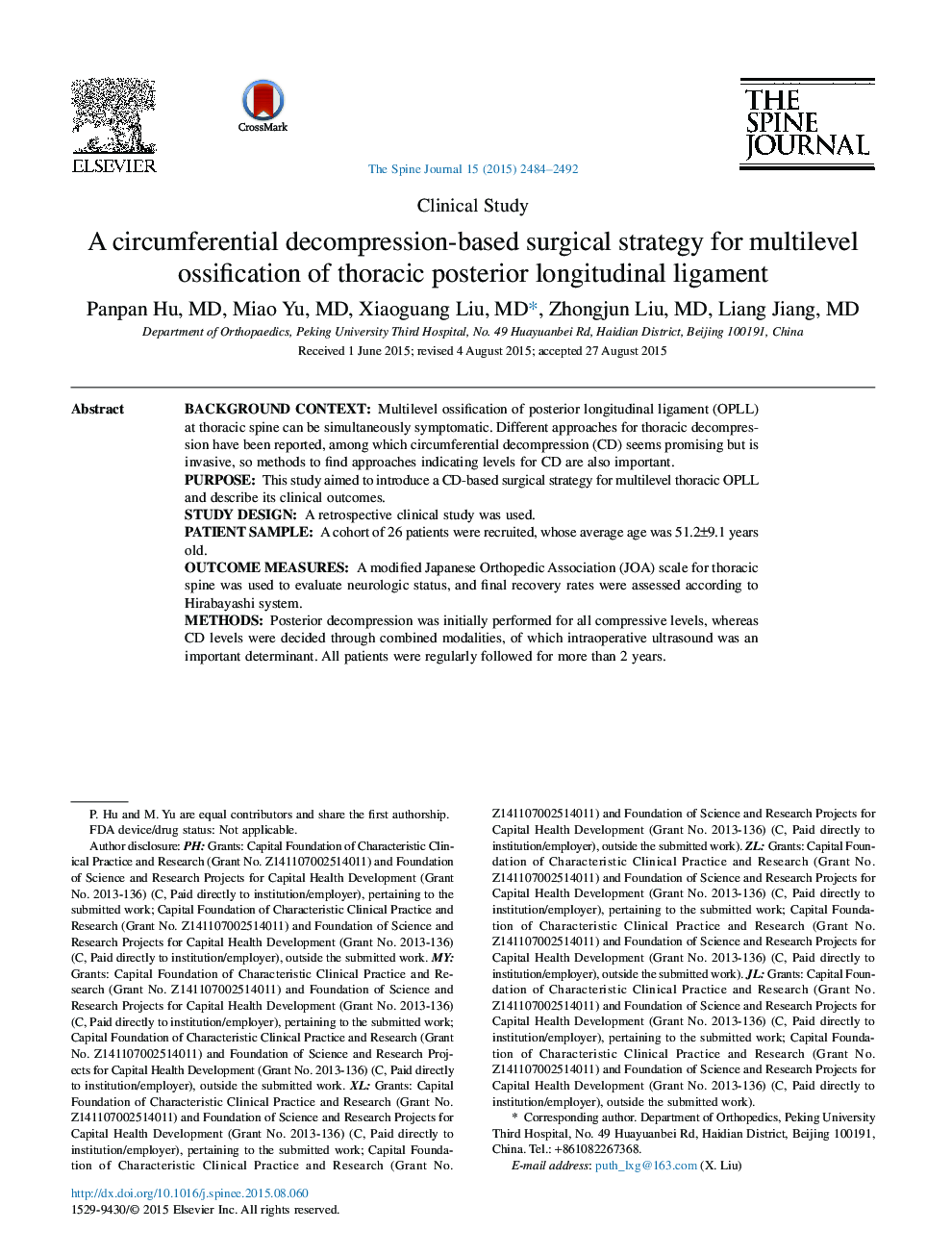| Article ID | Journal | Published Year | Pages | File Type |
|---|---|---|---|---|
| 4096220 | The Spine Journal | 2015 | 9 Pages |
Background ContextMultilevel ossification of posterior longitudinal ligament (OPLL) at thoracic spine can be simultaneously symptomatic. Different approaches for thoracic decompression have been reported, among which circumferential decompression (CD) seems promising but is invasive, so methods to find approaches indicating levels for CD are also important.PurposeThis study aimed to introduce a CD-based surgical strategy for multilevel thoracic OPLL and describe its clinical outcomes.Study DesignA retrospective clinical study was used.Patient SampleA cohort of 26 patients were recruited, whose average age was 51.2±9.1 years old.Outcome MeasuresA modified Japanese Orthopedic Association (JOA) scale for thoracic spine was used to evaluate neurologic status, and final recovery rates were assessed according to Hirabayashi system.MethodsPosterior decompression was initially performed for all compressive levels, whereas CD levels were decided through combined modalities, of which intraoperative ultrasound was an important determinant. All patients were regularly followed for more than 2 years.ResultsThe average operative duration and blood loss were 279.3±54.8 minutes and 2257.7±1443.9 mL, respectively. There were 17 patients (65.4%) who achieved instant improvement and 9 (34.6%) neurologically deteriorated. Cerebrospinal fluid leakage occurred in 10 patients (38.5%), but its occurrence did not affect the final neurologic recovery. Other complications included urinary infection, incision infection and disunion, lung infection, and subcutaneous fluid collection. Late events included death from cerebrovascular accident, pseudomeningocele, unremitted intercostal pain and continuing deterioration. The final JOA score and recovery rate were correlated with OPLL levels and preoperative JOA scores (p<.05). Eventually, the average JOA score was significantly elevated from 4.5±1.8 to 8.3±2.3 (p<.05), with the recovery rate of 11 patients rated as excellent, 7 as good, 6 as fair, and 2 as unchanged or deteriorated. The average recovery rate was 60.4%.ConclusionsThis CD-based surgical strategy was effective for multilevel thoracic OPLL and had fair late outcomes, but its postoperative courses were quite eventful. Intraoperative ultrasound was a reliable modality to determine CD levels.
